

Discover more from Hot Dish with Sohla
There are some phrases and songs from pop culture that are permanently burned into my brain. I can’t look at a tube of Mentos at the drugstore checkout without humming the theme song in my head for the rest of the day. And whenever I have to do something that takes a while, I hear Dory from Finding Nemo chanting, “Just keep swimming.”
It’s a mantra that often works in the kitchen. The key to my very tender and buttery poundcake? Just keep creaming. Want glossy and emulsified pasta? Just keep stirring. How do you transform soaked legumes into a batter that’ll fry up crispy and light? Just keep processing. In fact, where I’ve noticed a lot of novice cooks fall short is patience. Most cooking steps take longer than you think, especially if the culinary action you’re used to seeing is a highly edited 60-second Tik Tok.
Soaked legume* fritters are like magic. If you stick with it and just keep processing, a very crumbly mix of pulsed-up pulses transforms into a sticky batter without any egg, flour, starch—nothing! These kinds of simple soaked legume fritters are found all over the world, from Brazilian acaraje made from black-eyed peas, Egyptian ta’ameya made from dried fava beans, Bangladeshi piyaju made from red lentils, and probably the most well-known, falafel, which likely originated in Egypt but now can be found throughout the Middle East and Mediterranean.
*All beans and lentils are legumes. Lentil is the name for lens-shaped legumes, dal are lentils that have been split, and pulses are any legumes that are harvested for exclusively selling in their dried form.
These are ancient dishes that were made long before food processors or meat grinders, when people would smash and grind soaked legumes by hand. You can do it in a food processor, I promise! In this recipe, I use cannellini beans that are soaked overnight. You can use any legume you’ve got, just think about their size when deciding on soak time. Split lentils only need to soak for an hour, while gigante beans may take a couple of days.
Once soaked, puree the drained beans in a food processor, stopping frequently to scrape the bottom and sides, until the mixture holds together. (A blender can’t handle pureeing a mixture this dry, and you don’t want to add any liquid.) This takes longer than you think—remember what Dory said and just keep processing. Any additions like egg or flour will make the fritter dense and doughy. Once you’ve got your legume dough/batter (smush?), add whatever herbs and mixins you want. You can keep it simple with a few spices, or really load the batter up with chopped herbs, sliced onions, or grated veggies.
Time To Fry
Traditionally, fritters like these are deep-fried, but I rarely deep fry at home. Instead, I go for a shallow fry (½-inch of fat) in a small 6-inch skillet. This allows me to use less fat, but it does take longer since I will need to fry more, smaller batches. (If this sounds awful to you, feel free to fill up a Dutch oven with fat, heat it to 350F, and go deep!)
Because the shallow frying process takes longer, I always stick with a fat that doesn’t readily break down. By “break down,” I mean develop off flavors (canola oil tends to get fishy after just 30 minutes of frying) or lose its crisping capabilities. Have you ever fried in pot vegetable oil, with initially crispy results that end up oily by the last round? It’s not you. It’s your oil.
My favorite frying fats include ghee, refined coconut oil, or lard. Unlike unsaturated seed oils (like canola or soybean), unless you heat these saturated fats above 450F, they will not break down over time. Frying in these fats does initially cost a bit more, but you can strain, top off, and reuse them forever with no degradation in quality or flavor. It’s like magic! The foods you fry in these fats are also extra crispy and never greasy. There can be some flavor transfer, so I recommend one fat for frying savory food (I opt for ghee) and another fat for frying sweet foods (I opt for refined coconut oil).
To prevent the fat from overheating, keep a close eye on the oil’s temperature when you're frying your last batch of anything; it’s often right at the end when the fat can get too hot. When the food is a couple of minutes away from being done, I turn off the heat and let it finish cooking from the residual heat. Then as soon as I’ve removed the last items from the pan, I strain the fat through a fine mesh strainer into a metal bowl to stop the heating and catch any big bits of food. Any smaller crumbs will settle to the bottom as the fat cools. Once cooled but before the fat solidifies, I pour it into a container with a tight-fitting lid, leaving behind the settled crumbs. Cover and refrigerate until you’re ready to fry again.
Olive & Bean Fritters with Dilly Dip
makes about 30 fritters | active time: 45 minutes | total time: at least 24 hours
INGREDIENTS
for the fritters:
½ pound (227 grams) dry cannelini beans
1 ½ teaspoons Diamond Crystal kosher salt
1 teaspoon freshly ground black pepper
1 teaspoon garlic powder
1 cup lightly packed fresh dill
2 cups pitted castelvetrano olives
1 medium yellow onion, peeled and quartered
frying fat, like ghee, refined coconut oil, or safflower oil
for the dip:
¾ cup labne
½ cup buttermilk
½ cup lightly packed fresh dill, finely chopped
2 tablespoon olive brine
kosher salt and freshly ground pepper to taste
Soak the beans: Rinse the beans, cover with several inches of cool water, add 2 big pinches kosher salt, and stir well to combine. Cover and refrigerate for at least 24 hours and up to 3 days.
Make the dip: In a medium bowl, whisk together the labne and buttermilk until evenly combined. Stir in dill and olive brine. Season with salt and pepper to taste. Chill until ready to serve (can be made up to 3 days in advance).
Make the fritters: Drain and rinse the soaked beans. Place in a food processor along with the salt, pepper, and garlic powder. Process the mixture, stopping frequently to scrape the bottom and sides with a spatula, until the mixture is mostly smooth with a few panko-sized bits running thoughout, and easily holds together when gathered in your hands. (This can take some time. Don’t be tempted to add an egg or flour. Just keep processing, and the mixture will get there.)
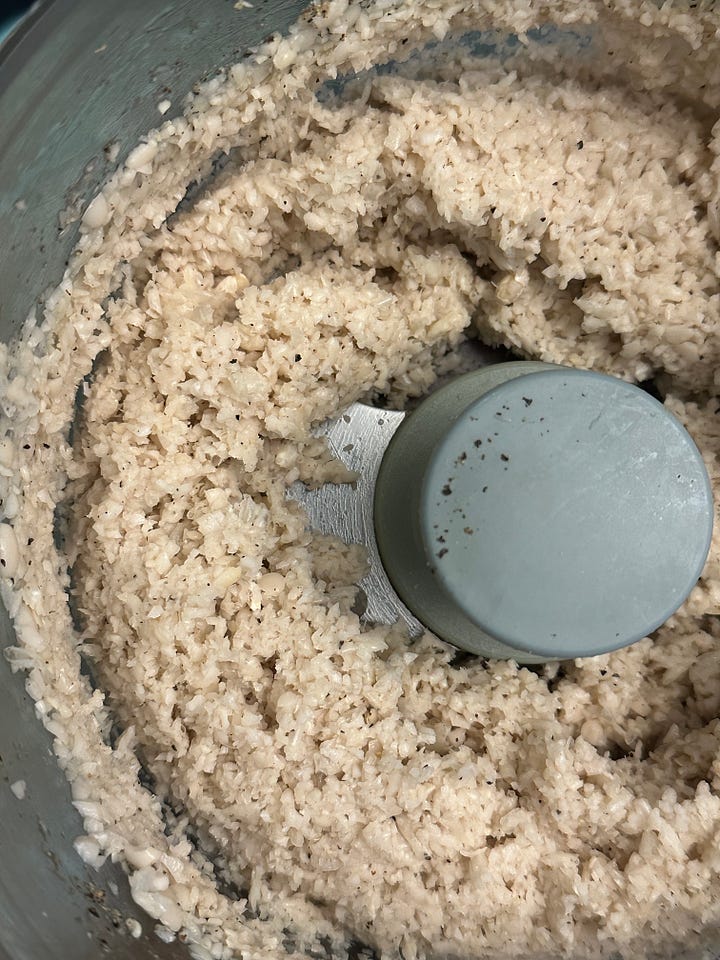
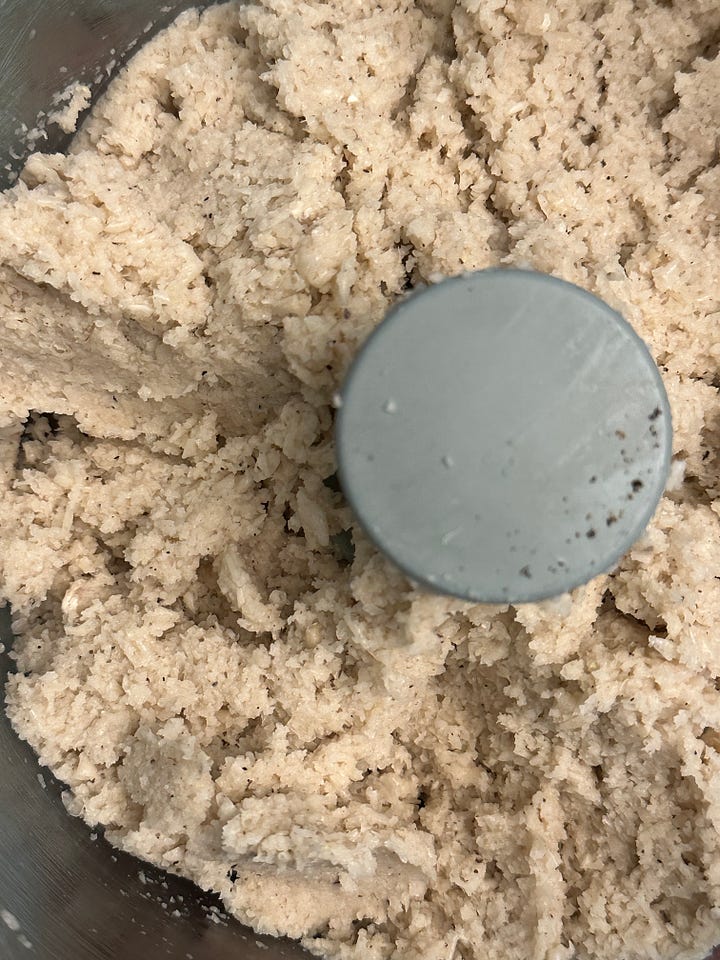
Add dill and process until finely chopped and evenly distributed through the bean mixture. Scrape into a large bowl.
Add the olives to the food processor (no need to wash it out) and pulse until roughly chopped. Scrape the olives into the bean mix. Add the onion to the food processor (no need to wash it out) and pulse until finely chopped. Scrape the onion into the bean mix. Stir and fold the bean mixture until the olives and onions are evenly incorporated.
Fry the fritters: Add enough fat to come ½-inch up the sides of a small or medium cast iron skillet. Heat over medium until the fat is about 350F on an instant read thermometer, or when you add a dollop of the bean mixture, the fat actively bubbles. (If the fat spits violently, it’s too hot. If it doesn’t bubble right away, it’s not hot enough.)
Use two large spoons to shape about 2 tablespoons of the bean mixture into a football shape: Hold one spoon in each hand parallel to you. Start with the mixture on one spoon, then use the side of the second spoon to scrape and shape it onto the other. Pass the mixture from one spoon to the other until it forms a footbal shape. Scrape the mixture into the hot fat and repeat with the remaining mixture.
Fry until deeply browned underneath and along the sides, about 5 minutes. Flip and continue frying until deeply browned on the other side, about 3 minutes. (If the fritters brown too quickly, turn down the heat. They need to fry slowly and brown deeply to ensure that it’s cooked all the way through.) Use a slotted spoon to transfer to a plate lined with paper towels. Lightly sprinkle with kosher salt right away. Serve hot with the dip.
Notes
SALT: I use Diamond Crystal kosher salt in all my cooking and baking. It has big fluffy crystals that are easy to sprinkle and is less salty by volume than most other salts. If you are using Morton’s kosher salt, use just over half as much. If you are using table salt or fine sea salt, use just under half as much. Or feel free to skip the measurements and salt to taste instead.
Swaps
CANNELINI BEANS: Try this with any bean or lentil, taking note of their size to determine how long to soak. Split lentils only need to soak for about an hour, while a big butter bean may need 48 hours.
OLIVES & BRINE: Swap the olives for any briny, pickle-y thing. Try dill pickles, capers, cornishons, or kimchi. Swap the olive brine in the dip for pickle brine, kimchi brine, or fresh lemon juice
DILL: I love dill, but I know it’s not everyone’s thing. Swap the dill for any other tender herb, like parsley, cilantro, chervil, or chives.
LABNE & BUTTERMILK: Make the dip with any combo of creamy things, like Greek yogurt, kefir, or coconut yogurt. Just mix and match until you’ve got the texture you want and adjust the acidity with brine, lemon juice, or vinegar.
Subscribe to Hot Dish with Sohla
New exclusive recipes every month! Featuring fun tips on how to riff and deep dives into culinary techniques—so you can be a boss in your kitchen.




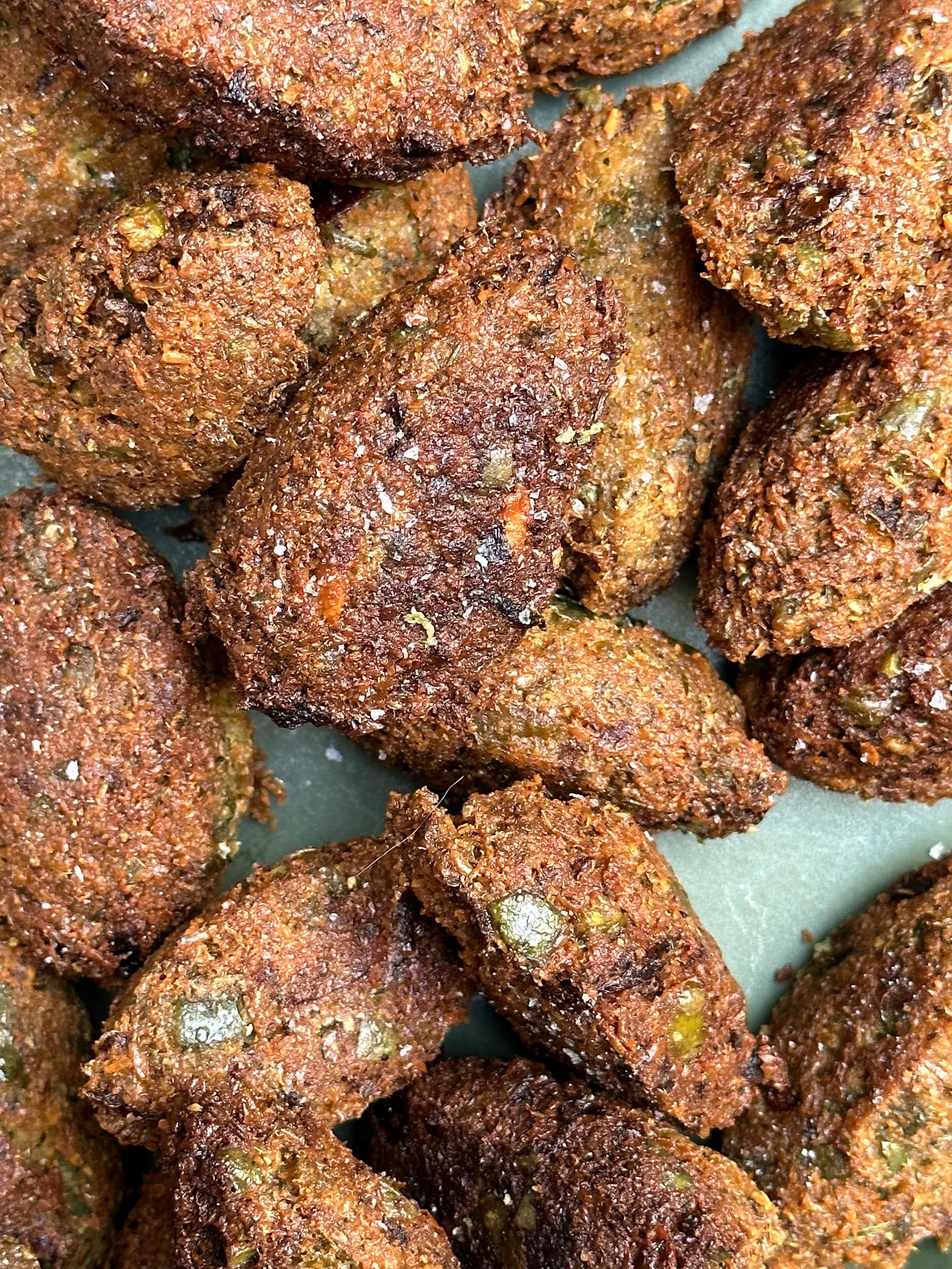
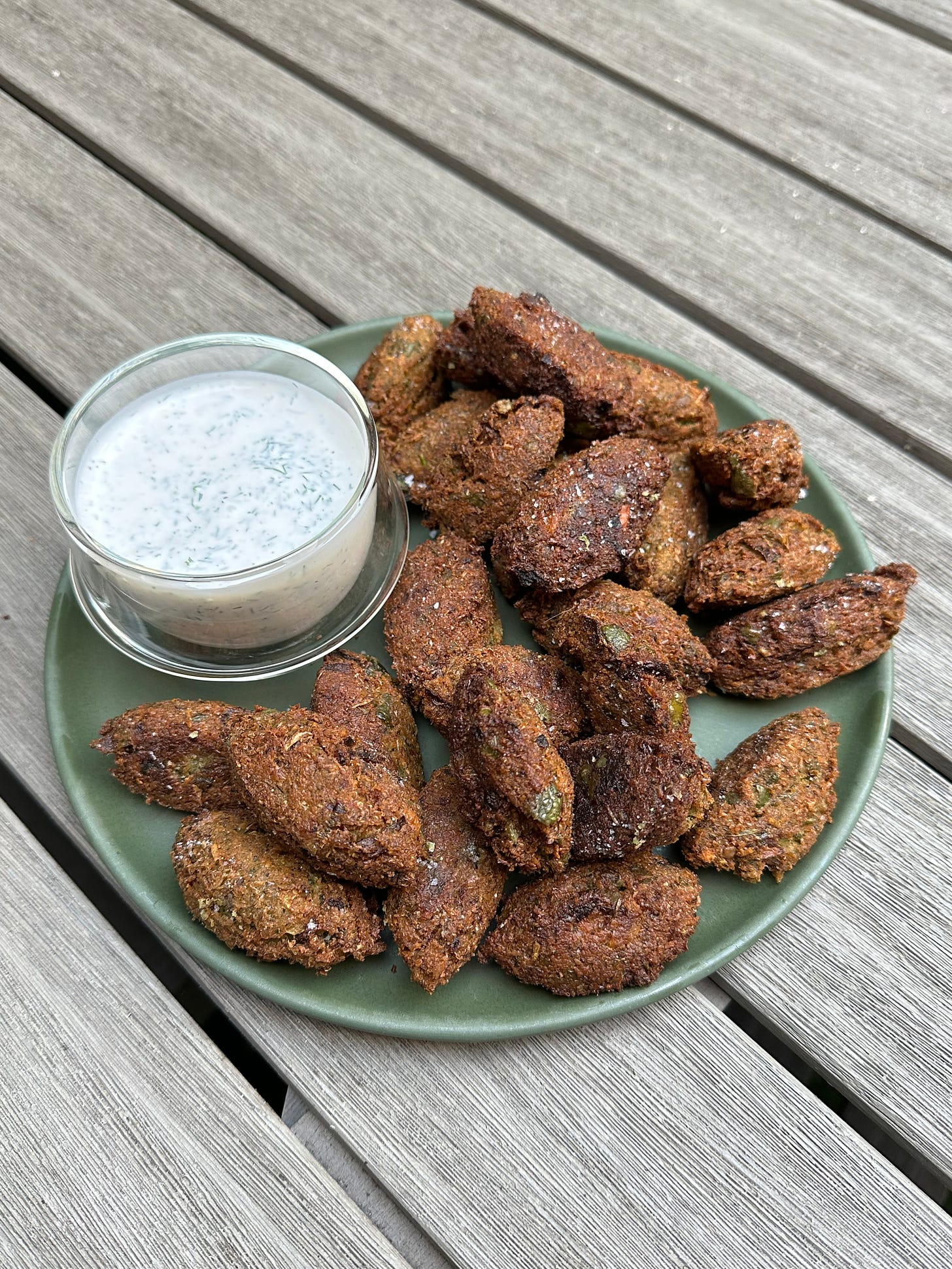






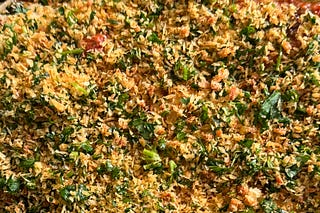
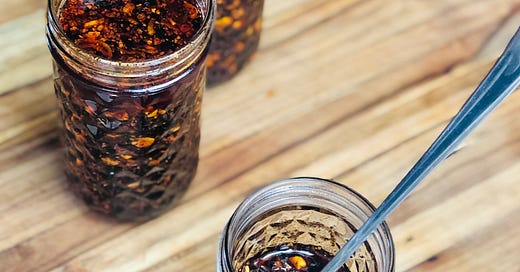



Hi all! Just want to put this out there for everyone: FRY THESE AS WRITTEN. Do NOT bake them. Beans contain lectins, which can make you very very ill if not heated thoroughly to denature the protein (just 3-4 uncooked red kidney beans can cause an upset stomach). I actually messed around with this kind of recipe a few years back, baked my fritters, thought they came up to a proper temp (but did not!) and ended up causing a TON of GI distress in my partner and I. So please: FRY THEM THOROUGHLY.
Maybe it's crazy, but I'm going to try this with pinto beans! I'll go towards mexican flavors – jalapeno, cilantro, and maybe crema or avocado? If anyone tries this before I do, LMK if it's good!